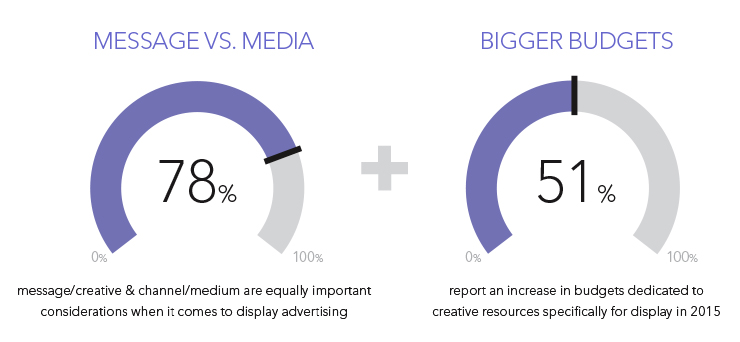
This article was written by Mihael Mikek, CEO & Co-founder at Celtra Inc. and originally published in AdAge.
Talk about your buzzwords: one of the most intriguing topics bubbling to the top of marketing chatter these days is “programmatic.” It doesn’t necessarily mean much to those outside the industry yet —but this staid terminology belies a fascinating technology that has transformed advertising. This revolution in ad placement is worthy of the hype; just ask anybody in digital marketing.
Programmatic platforms make it possible for brands to run optimized, targeted cross-device campaigns, with the buying and selling of ad space performed machine-to-machine via real-time bidding (RTB) and ad exchanges. Programmatic is essential for advertisers and agencies aiming to keep costs low by automating the ad buying process while targeting the right audience. And while the industry has successfully mastered getting to the right audience at the right time it neglects the importance of doing so with the right message.
The State of the Industry
As premium programmatic proves its merits, acceptance and quality are quickly rising. A recently released State of the Industry survey, conducted by Celtra, found that marketers are showing a strong desire to focus more on the creative. The survey also found that marketers want to see several prevalent issues solved in order to commit even more of their budgets to creative.
Let’s face it: Creative components, such as relevant messaging and formats, account for a major portion of a campaign’s sales impact. But in the digital space, unlike TV and print, creative is relegated to a “nice-to-have” role behind heavily emphasized media factors such as reach and targeting. Both impactful creative and intelligent media targeting should be regarded as “need-to-have.” Solid competitive advantage and customer satisfaction go to the brands that can do both on the channels that matter more every day—mobile, tablet and the desktop.
All About the Consumer
It’s natural that the technical aspects of programmatic have hogged the spotlight a bit. But, as much as the ad tech world might be all a-buzz about it, consumers simply want relevant content and seamless, integrated brand experiences on their mobile devices. They want compelling stories that tug at their heartstrings or get their “gotta have it” neurons firing.
Ad technology is the vehicle that can bring great content, great experiences and great stories to consumers in a way that is most significant to them. This can be accomplished by using data in an innovative way to create relevant content, bringing forward contextually relevant creative and ultimately driving people to greater emotional connection with a brand’s message.
Brands are learning how to use programmatic strengths to their advantage with highly personalized, just-in-time advertising experiences. It’s clear that powerful messages stick with consumers for a longer journey to purchase. That’s the sweet spot. It’s the promised land of programmatic and data-driven dynamic ads.
The Three R’s
Even though advertising is in a state of flux, the objectives remain the same: delivering the right message, to the right person, at the right time. It’s truly exciting that targeted delivery is now a cost-effective reality. But all of the focus on automation and efficiency can be distracting. At this point, we are well into integrating ad tech and gaining mastery with it.
Now is the time to renew our enthusiasm for the message—to approach display advertising with fresh eyes and impassioned creativity. Mobile provides personal user experiences, and emerging wearable devices will provide an even more personal experience. But while trying to make the most of the dramatically shifting ways users consume content, we almost forgot the obvious—on such an intimate platform, emotional and sensory influence are paramount.
When the art and science of digital marketing come together in unison, magic happens. Programmatic tools will bring compelling experiences to customers at the just right time and place, for the right price. Brands can use these mobile mediums to extend their reach with power, intelligence, and precision—reaping value in ways we’ve only begun to imagine.
More from Digiday

Pandora is betting on AI agents to scale service and emotional selling during the peak holiday season
Pandora is using AI agents to scale customer service and replicate emotional in-store selling online, just as peak season puts pressure on margins and teams.

Rembrand’s CEO wants to grow virtual ad placements in streaming, and he’s looking elsewhere for models
Omar Tawakol wants to improve advertising within the streaming world, and is working with advertisers and publishers to improve that experience.

Marketers are keen to use generative AI in ad campaigns, but hidden costs lurk
Marketers across the industry want to use AI to cut down on time spent in creative production. It’s not so simple in practice.






